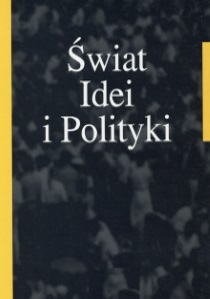Wybrane działania polityki bezpieczeństwa w zakresie informacji wywiadowczych na początku XXI wieku
DOI:
https://doi.org/10.34767/SIIP.2019.18.08Słowa kluczowe:
polityka bezpieczeństwa, wywiad, kontrwywiad, cyberbezpieczeństwo, misje pokojoweAbstrakt
Ogromne zmiany i ciągły rozwój zastosowań technologii i komunikacji zmieniły sposób, w jaki postrzegany jest świat. Rewolucja informacyjna miała wpływ na gromadzenie danych wywiadowczych, ich przetwarzanie, analizę i rozpowszechnianie, a także na to, w jaki sposób decydenci mogą uzyskać dostęp do rzetelnych informacji w odpowiednim czasie, a także do źródeł, na których najprawdopodobniej będą polegać, gdy konkretna informacja jest potrzebna do podjęcia decyzji. Niniejszy artykuł próbuje opisać, przeanalizować i wyjaśnić naturę trwającej rewolucji informacyjnej, przedstawić jej główny wpływ na wywiad i politykę bezpieczeństwa oraz omówić znaczenie analizy wywiadowczej w kontekście realizowania działań podczas misji pokojowych.
Bibliografia
Barnea, A. (2017). Counterintelligence: stepson of the intelligence discipline. Israel Affairs, 23/4, ss. 715–726.
Bitton, R. (2014). The legitimacy of spying among nations. American University International Law Review, 29/5, ss. 1009–1070.
Bossong, R.(2014). The European Programme for the protection of critical infrastructures – meta-governing a new security problem? European Security, 23/2, ss. 210–226.
Brown, G. (2016). Spying and Fighting in Cyberspace: What is Which? Journal of National Security Law & Policy, 8/3, ss. 1–22.
Degaut, M. (2016). Spies and Policymakers: Intelligence in the Information Age. Intelligence and National Security, 31/4, ss. 509–531.
Edwards, J.A., & Valenzano J.M., & Stevenson K. (2011). The Peacekeeping Mission: Bringing Stability to a Chaotic Scene. Communication Quarterly, 59/3, ss. 339–358.
Fripp, W. (2018). The hacked world order: how nations fight, trade, maneuver, and manipulate in the digital age, Intelligence and National Security, 33/4, ss. 623–626.
Górka, M. (2016a). Dyplomacja i wywiad. Przyczynek do refleksji nad polityką bezpieczeństwa. W: M. Górka, (red.), Wywiad i kontrwywiad w polityce międzynarodowej na przełomie XX i XXI wieku, (64–82).Warszawa: Adam Marszałek.
Górka, M. (2016b). Wolność czy bezpieczeństwo? Przyczynek do rozważań na przykładzie ustawy o działaniach antyterrorystycznych z dnia 10 czerwca 2016 roku. Kwartalnik Naukowy OAP UW e-Politikon, 19, ss. 64–82.
Górka, M. (2017c). Technologia informacyjna w obszarze cyberbezpieczeńśtwa państwa i społeczeństwa. Systemy wspomagania inżynierii produkcji, 6/5, ss. 73–89.
Górka, M. (2017d). Rola i zadania kontrwywiadu w obszarze funkcjonowania państwa z uwzględnieniem wybranych aspektów polityki bezpieczeństwa III RP. Środkowoeuropejskie Studia Polityczne, 2, ss. 103–123.
Górka, M. (2017e). Wybrane aspekty polityki bezpieczeństwa w kontekście zagrożeń terrorystycznych w Europie. Symbolae Europaeae, 11, s. 64.
Kahana, E. (2001). Mossad – CIA Cooperation. International Journal of Intelligence and CounterIntelligence, 14, s. 410.
Lahneman, W.J. (2010). The Need for a New Intelligence Paradigm. International Journal of Intelligence and Counterintelligence, 23/2, s. 209.
Lefebvre, S. (2017). „The Belgians Just Aren’t up to It”: Belgian Intelligence and Contemporary Terrorism. International Journal of Intelligence and CounterIntelligence, 30/1, ss. 1–29.
Mattern, T., & Felker J., & Borum R., & Bamford G. (2014). Operational Levels of Cyber Intelligence. International Journal of Intelligence and CounterIntelligence, 27/4, ss. 702–719.
Melman, Y. (2012). Mossad’s split personality. The Jerusalem Report, 31 grudnia.
Omilianowicz, R. (2009). Wykorzystanie otwartych źródeł informacji w działalności wywiadowczej. W: W. Wróblewski, (red.), Wywiad i kontrwywiad w świecie (145–158). Szczecin.
Rudner, M. (2013). Cyber-Threats to Critical National Infrastructure: An Intelligence Challenge. International Journal of Intelligence and CounterIntelligence, 26/3, ss. 453–481.
Shetler-Jones, P. (2008). Intelligence in Integrated UN Peacekeeping Missions: The Joint Mission Analysis Centre. International Peacekeeping, 15/4, ss. 339–358.
Shimron, G. (1996). The Mossad and the Myth. Tel Awiw.
Sloan, S. (2002). Meeting the Terrorist Threat: The Localization of Counter Terrorism Intelligence. Police Practice and Research, 3/4,ss. 337–345.
Steele, R.D. (2006). Peacekeeping Intelligence and Information Peacekeeping. International Journal of Intelligence and CounterIntelligence, 19/3, ss. 519–537.
Stefanescu, D.C. (2017). Military capabilities that Romania needs for preventing and waging a hybrid war. Review of the Air Force Academy, 1, ss. 155–160.
Stephens, E. (2008). Caught on the hop: the Yom Kippur war. History Today, 58/10, ss. 44–50.
Svendsen, A.D.M. (2012). The Federal Bureau of Investigation and Change: Addressing US Domestic Counter-terrorism Intelligence. Intelligence and National Security, 27/3, ss. 371–397.
Tyler, P. (2014). Twierdza Izrael. Zakulisowa historia elit wojskowych, które uparcie bronią się przed pokojem. Poznań.
Wilner, A. (2017). Cyber deterrence and critical-infrastructure protection: Expectation, application, and limitation. Comparative Strategy, 36/4, ss. 309–318.
Woodhouse, T. (2010). Peacekeeping, Peace Culture and Conflict Resolution. International Peacekeeping, 17/4, ss. 486–498.

